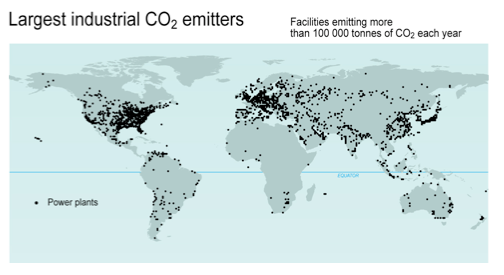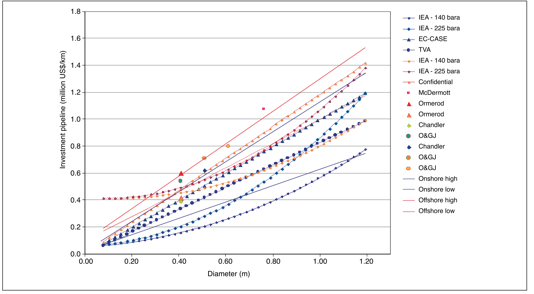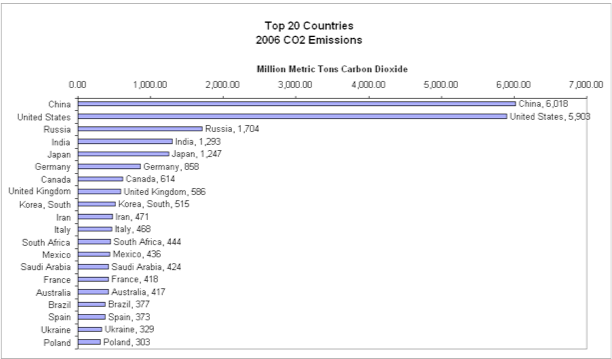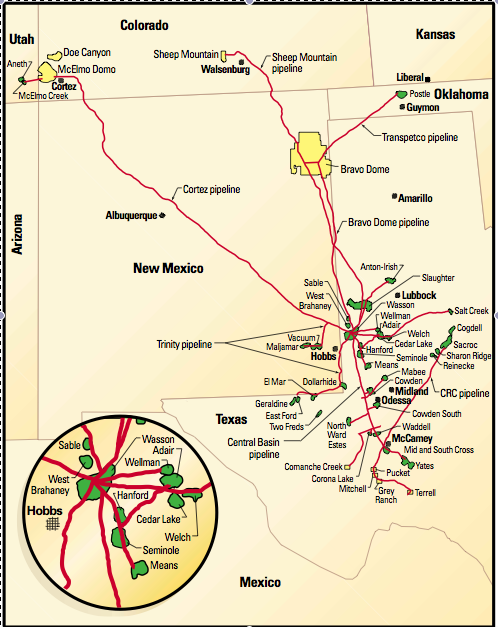Transportation
Pipeline Transportation:
Pipeline transportation is the most effective way to move large volumes of carbon dioxide (CO2) from one place to another (Doctor, 2005; Balat, 2009; McCoy, 2008; Vandegiste, 2009). Because CO2 transportation is similar to the transportation of hydrocarbons (natural gas), many studies have been done from already constructed natural gas pipelines to study possible behaviors of CO2 (Doctor, 2005). Additionally, over 2,500km of CO2 pipelines have been made by companies such as Kinder-Morgan for use in oil and gas reservoir sequestration (Moritis, 2001).
First, CO2 is separated from power plant emissions via pre-combustion capture, oxy-fuel combustion capture, or post-combustion capture methods or separated from the air using air capture. The CO2 is pressurized into a liquid state. Roughly 9.6 MPa are required to put CO2 in a dense phase so that large volumes of it can be transported at a lesser cost (Doctor, 2005). Once the CO2 is pressurized, it is sent into a pipeline in which the constant flow of CO2 drives the propulsion of the system.
As pressurized CO2 travels long distances, the loss of energy causes the need for booster stations to re-pressurize the CO2, as energy is required to maintain the flow. These stations are generally located 160 km apart on long straight pipelines, and located before mountains or any long-term inclines (Doctor, 2005).
Pipeline transportation works like a web. Usually, power plants are located near cities so that energy can be easily transported to those cities, such is the case in the Eastern United States, as well as the Pacific Coast of China (Largest Industrial CO2 Emitters, 2009).

In these cases, transportation is designed in a “CO2 highway” method, where huge pipelines (well beyond the average diameter of 0.4m (16in)) travel along a path, and smaller pipelines from power plants connect to these CO2 highways. These highways are constructed to pass through the highest concentrations of power plants, but avoid cities and high population areas as much as possible due to safety reasons, and are directed towards storage sites. Once at the storage sites, these pipelines are divided up into multiple smaller pipelines to distribute the pressurized CO2 into saline aquifers, fields for oil and gas reservoir sequestration, or sites for in situ mineral CO2 sequestration. The exact distance between drilling sites varies between each sequestration site due to many different variables. If a power plant is small and far away from storage sites and other power plants, it may be too costly to connect it to a pipeline system.
Potential Locations:
The optimal locations to build pipelines are through unpopulated, flat regions. Avoiding geographic areas such as mountains, rivers, lakes, and canyons also decreases price due to the extremely high costs associated with building underwater pipelines, and booster stations. Avoiding residential areas altogether allows the pipes to travel in straight lines without having to worry about constructing around neighborhoods, buildings, or parks, and it is safer to build pipelines though less populated zones if the pipes were to leak. If there were a fracture of a pipe passing through a residential area a substantial amount of CO2 could be released. If the concentrations of CO2 in the air near the leakage were to surpass 8%, the effects would be lethal to anybody nearby. Although the regulation for the structural integrity of CO2 pipeline is about 30 - 36 times (capacity of 365 MPa) that of operational pressure, 9.6 MPa, there are still risks associated with transporting huge amounts of CO2 (Balat, 2009). When building in high population areas it is also critical to have CO2 sensors distributed frequently (1 detector approximately every 402 m in cities), to inform pipe operators of leaks. The costs associated with this system are currently unknown.
Safety:
Regulations for the quality of CO2 being transported state that 95% of the molar volume must be CO2, the other 5% may be occupied by other compounds. If, however, any “free water” (water that is not pressurized enough to become soluble in the CO2 mixture) is present, it may corrode the pipeline at a rate of about 0.7mm per year for a typical 10.3 mm thick, 0.4m diameter pipeline and will corrode in roughly 15 years, versus a corrosion rate of a minimal 0.0025 - 0.00025mm per year with dry carbon, lasting 4,000 to 40,000 years (McCoy, 2008; Doctor, 2005).
Improper welding of pipeline segments may also lead to leaks, therefore multiple tests must be done after construction to test for leaks.
Over the years of 1990 - 2001, only about 1 incident has occurred for every 2000 km of pipeline, none of which have involved injuries, as compared to the 1 incidents for every 5000 km that did involve injuries or fatalities in natural gas pipeline (Pennsylvania Carbon Management Advisory Group, 2009). According to the IPCC report, increasing cover, the amount of land above a pipeline, from 1 m to 1 m reduces the damage frequency by a factor of 10 in rural areas and by 3.5 in suburban areas. Also, pipeline leakage in the USA is 1.5 +/- 0.5% of the total amount of CO2 transported, not per kilometer of pipeline (Doctor, 2005).
Cost Estimates:
- A typical 100km long 0.4m diameter pipeline costs about $35 million (McCoy, 2008; Doctor, 2005). Such a pipeline is capable of transporting the emissions of an average 500MW plant (2 - 3 Mt of CO2) (Doctor, 2005).
- When constructing pipeline the major costs arise from the diameter of the pipeline, the length of pipeline, the material of the pipeline, and the locations through which the pipeline travels (McCoy, 2008; Doctor, 2005). Other costs arise from operation and maintenance costs, land ownership issues, and the costs of storing CO2 (McCoy, 2008; Eccles et al, 2009).
-
Below is a graph estimating the cost per km of CO2 pipeline with varying diameters from a variety of sources/studies (Doctor, 2005):

Costs given will generally be the expected costs over the next 100 years unless the market for certain materials changes drastically (Doctor, 2005).
Capacity Needs:
-
In 2006, the United States alone emitted around 5900-6000 Mt of CO2, which was slightly less than 20% of the world’s total emissions, as shown in the graph below (Union of Concerned Scientists, 2009):

- Assuming that all CO2 produced can be captured, about 0.98 - 1.5 million km of 0.4 diameter pipeline would be needed to transport this much CO2, unless pipelines with larger diameters (approximately 2m in diameter) are constructed. Most CO2 pipelines, however, have not exceeded 0.76m (Doctor, 2005; Moritis, 2001). Also, the effects of CO2 pressure on larger pipes, for example the proposed 2m diameter pipes, is currently unknown (Vandegiste, 2009).
- The largest pipeline is the Cortez pipeline, which is 0.76m in diameter. This pipeline transports the emissions from three 1000 MWh power plants (6-7 Mmt of CO2/year each) over 800 km (Doctor, 2005; Moritis, 2001).
- For pipeline transportation to be economical, manageable, and safer on a large scale, it is best for the power plants to pool their emissions into one big pipeline.
US CO2 pipelines for oil and gas reservoir sequestration used by Kinder-Morgan (Moritis, 2001):


